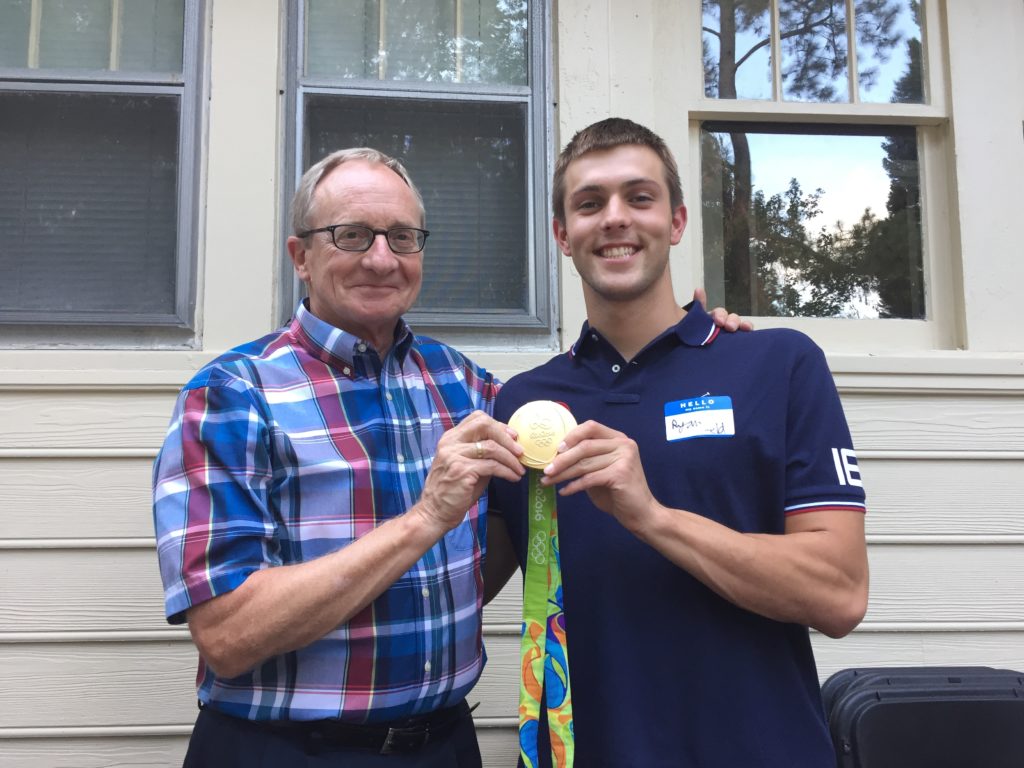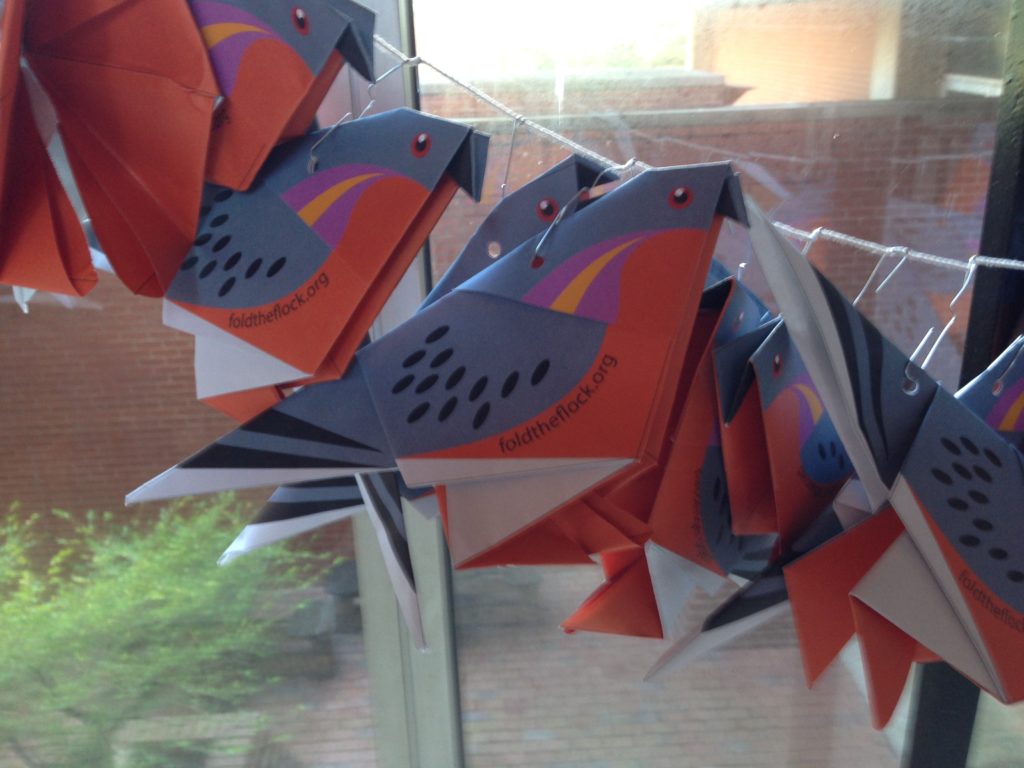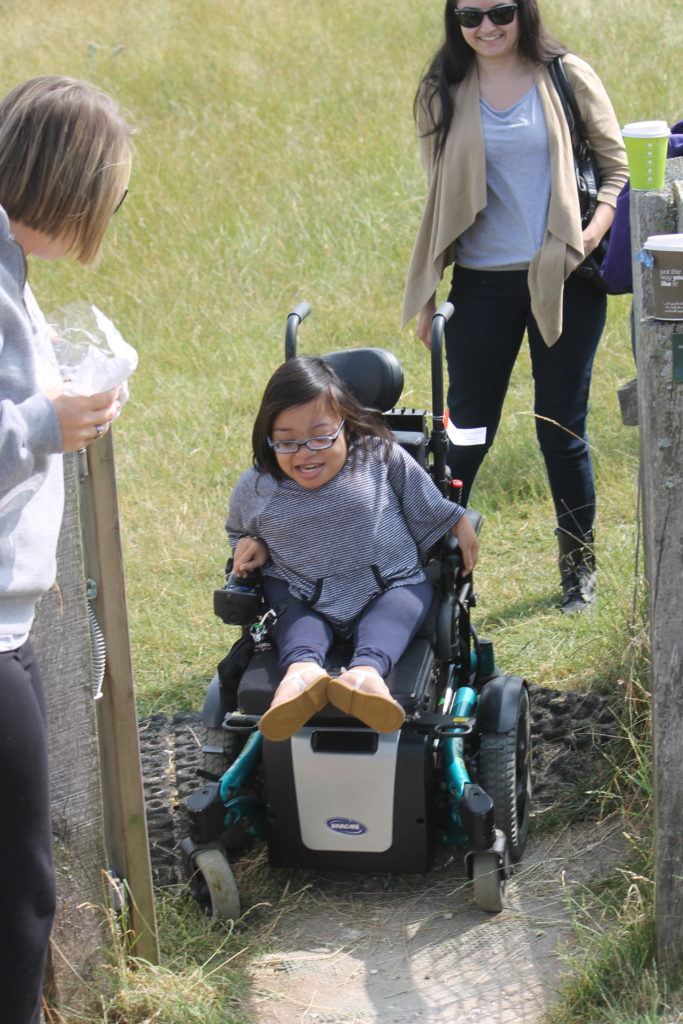Class was about ready to start at 8:30 AM. I was busy getting the technology set up in 232A Withers. With a class of 295 students, technology is an absorbing necessity. Log into the computer, load the Powerpoint, cue the music, lower the twin screens, sound-check the microphone, make the stupid lights work. I heard a commotion and looked up.
Down the aisle came a parade of my colleagues—department head, dean, a dozen or so faculty and staff, and my wife. They each carried several boxes of Krispy Kreme doughnuts. Tom Gower, my department head, started talking. Although this wasn’t my last class, it was my last course before I retired. He thought a little party was in order.
I was floored. Speechless. I didn’t hear much of what Tom said. The students stood and applauded, for a long time. I introduced my wife, Sharon, who students know well as she-who-must-be-obeyed. My colleagues served doughnuts up and down the aisles—doughnuts for 300. It was a wonderful event, mostly because it was totally unexpected, a surprise to a guy who doesn’t get surprised much. I barely managed to hold it together. My colleagues and wife left, and I got back to work.
Why doughnuts, you ask? On my office wall hung a plaque containing a freeze-dried cake doughnut awarded to me as “The Departmental Doughnut” in 1994 by the graduate students at Virginia Tech. It is a real doughnut, and it has survived for nearly a quarter century—graduate students studying the physiology of wild animals know how to preserve organic tissue. As their department head, I encouraged graduate students to finish their degrees completely—that is, thesis or dissertation signed off and accepted by the Graduate School—by treating them all to doughnuts each time a student finished. And for a completed dissertation, I bought jelly-filled doughnuts. Our graduation rate skyrocketed for several years. The plaque is one of my prized possessions.
All those doughnuts got me thinking about other memorable events in my classrooms over the years. Here are a few.
- Best student-athlete. NC State swimmer Ryan Held took my class in Spring 2015. After he and his teammates won the NCAA championship in the 400-yard freestyle relay, we recognized him in class with rousing applause. Ryan recently graduated. He is a great student, athlete and, most importantly, person. Look in the dictionary under “great student-athlete,” and you’ll find Ryan’s picture. He sat in the right rear of the classroom, a spot often picked by famous athletes, including first-round draft picks Carlos Rodon (pitcher for the White Sox) and Dennis Smith Jr. (point guard for the Dallas Mavericks). Seems like studying natural resources is good for your pro career.

- Coolest prop. I always tell new teachers to use props in class. Anything works—juggling balls, costumes, antiques. But snakes are the best. Snakes are great examples to show the different way people feel about nature. Some like them, some hate them—and a full array of attitudes in between. For my second class period, I have often asked a student to bring their pet snake in to make that point. The bigger the snake, the better. Until the semester when three male students brought a 12-foot reticulated python. It took three of them to hold it. We challenged each other, that python and I, nose to nose, eye to eye. It flicked its forked tongue towards me playfully, as if to say, “Want a hug?” I blinked first.

- Favorite active-learning task. A class of 300 doesn’t invite much class participation. Groans at my bad jokes are about the limit. But, September 1, 2014 was different. That day was the 100th anniversary of the extinction of the Passenger Pigeon, when the last living pigeon, Martha, died at the Cincinnati Zoo. To raise awareness for the conservation of biodiversity, a national group organized an attempt to fold 1 million origami Passenger Pigeons. At NC State, we folded 1500, starting with 500 in my class. We held a birthday party for Martha on the Brickyard where students folded hundreds more. Teaching 250 students to do origami is a lot more challenging than teaching them the logistic model for population growth.
- Worst reaction to an exam. I was a teaching assistant in a large class at the University of Missouri during my Masters’ program. We were giving a mid-term, and I was stationed near the back of the auditorium. About halfway through the period, a student jumped up near me, shouted, “I give up,” and tossed his exam paper into the air. The nine pages separated and floated over the heads of the other students like feathers on a breeze. He didn’t pass.
- Most famous TA. Nothing helps raise your teaching ratings like a good teaching assistant. I hit the jackpot when Justin Robinson joined me as a teacher for two semesters. Justin was a founding member of the Carolina Chocolate Drops, which won the Grammy in 2010 for the best traditional folk album. He can fiddle like nobody’s business. When things got slow in class, I’d ask Justin to bring in an instrument—violin, guitar, whatever—and sing a song. A favorite was “Butcher Bird,” comparing love gone wrong to the habits of the predatory Loggerhead Shrike, which impales its prey on a thorn before devouring it. My analysis shows that Justin was good for +0.2 points on the teaching evaluation.

- Most inspirational student. My first summer teaching in London, we enrolled a student in a wheelchair. Her name was Xuan Troung. I thought she might present a problem—England, despite what it might advertise, isn’t as handicapped accessible as the U.S. But Xuan was an inspiration, not a problem. She figured it all out, and so did her classmates. Her motorized chair took her many places, but a smaller manual chair served for field trips. If we hit an obstacle, two classmates would grab the chair and in seconds she and we would be over it. Nothing stopped her. At Stonehenge, I lost her for awhile. Then I saw her, in the middle of an adjacent pasture, cruising among the sheep. Xuan has graduated and now works for an organization that helps handicapped students go on study abroad.
- Best excuse. I appreciate creativity in all its forms, but although students might think their excuse is original, I’ve probably heard it many times. My car broke down, the printer ate my paper, my dog needed to go to the vet. My two favorite excuses were unique. A student called me the night before an exam. He said, “I was in jail all weekend and didn’t have my notes, so I couldn’t study. Can I take the exam late?” My answer, of course, was no. Many years later, a non-traditional student, a single mother with three children at home, emailed me. “All my kids got the flu,” she said, “one right after the other. Can I take the exam late?” My answer, of course, was yes.
- Best field trip. Students always want to go on field trips, but with nearly 300 in class, that’s impossible. Things are different on study abroad—that should be one big field trip. And so it was when I co-taught a study abroad class in South Africa. Poisonous snakes in the toilet, menacing elephants at the roadside, warthogs grazing on the lawn—all in a day’s work. But the high point was a visit to Tshukudu Game Reserve. Rescued cheetahs roam the grounds, like big pussy cats, eager for a scratch behind the ears. We went hunting with them. Priceless.